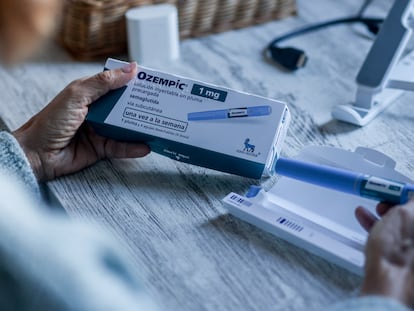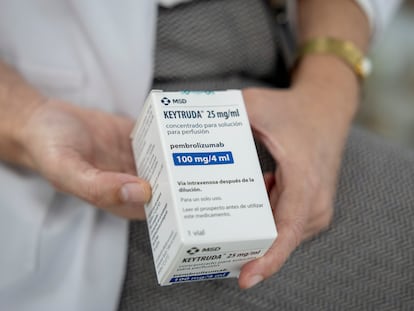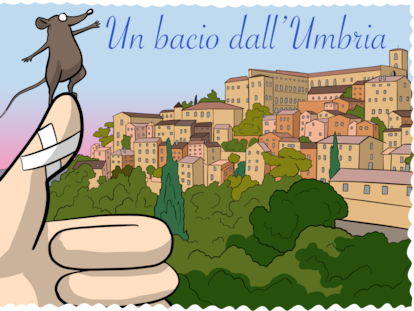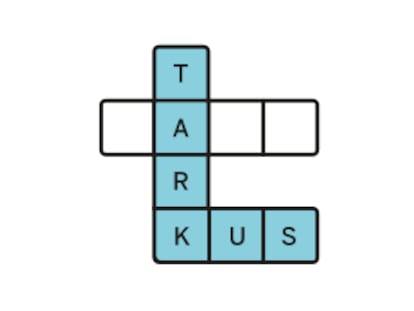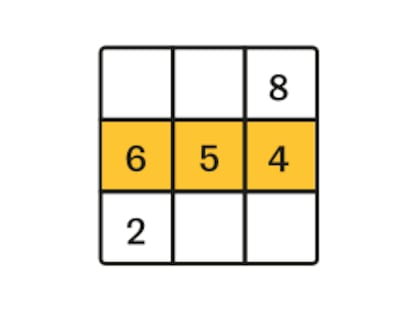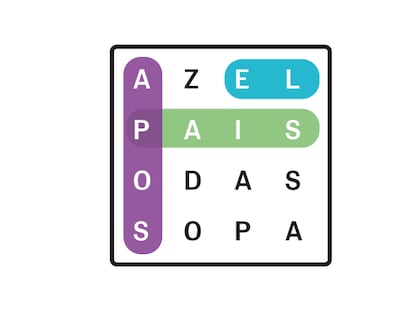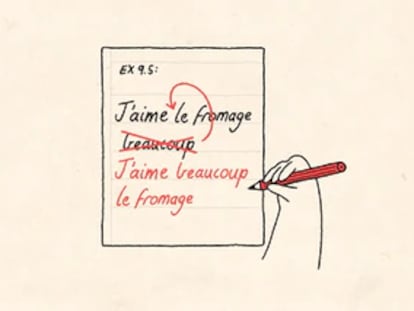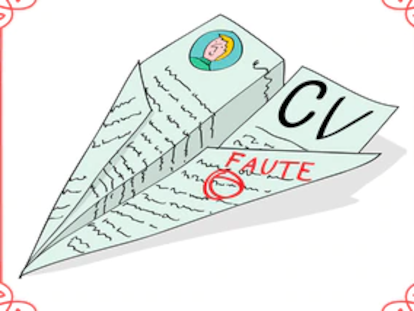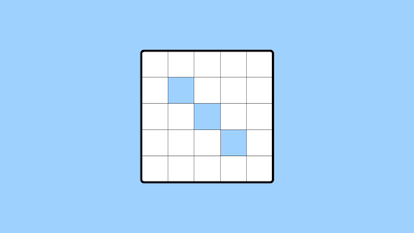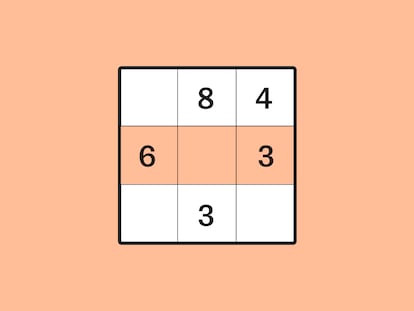High blood pressure medication for adults also helps children with butterfly skin
New research reveals the potential of drugs that have been on the market for decades to treat diseases other than those for which they were approved
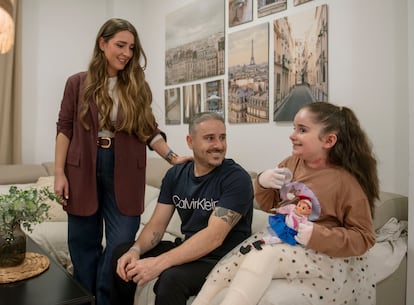
Mía Millán is seven years old and one of the 500 people born in Spain with epidermolysis bullosa, a rare genetic disease — also known as butterfly skin — that causes painful sores that remain open for years at the slightest impact. Science has recently brought good news for these patients with a gene therapy, approved in February by the European Medicines Agency (EMA), that heals 70% of wounds within three months. But children like Mía can also benefit from advances in other areas of medical research. Losartan, a drug used for decades for hypertension, has shown good results in healing butterfly skin lesions in studies.
These are two innovations with disparate origins but a common goal: to help people with epidermolysis bullosa until a definitive cure is found. The first involves the development of new drugs, a process that requires more than a decade of research and huge amounts of money. The second is an example of so-called repurposing, the use of drugs approved long ago to treat other diseases in new conditions.
This approach saves time and money because these drugs are well-known, with extensive published research and expired patents. But despite their undoubted advantages, repurposing drugs like losartan isn’t as simple as using the blood pressure pill many adults take to treat children with butterfly skin, admits Tobias Zahn, director of Crowd Pharma, a small company spun out of the University of Freiburg (Germany).
“We know this molecule is safe. We also have promising reports in cases of epidermolysis bullosa. But the efficacy studies are in mice, and we still have further progress to make. Patients deserve data validated by a double-blind clinical trial,” Zahn explains. In these types of trials, to avoid bias, participants are unaware of which patients are receiving the drug and which are receiving a placebo. These trials generate the most robust scientific evidence, which is required by the EMA to approve a new indication. Crowd Pharma is now seeking investors to contribute the €5-10 million ($5.5-11 million) that the trial will cost.
Zahn spoke to EL PAÍS at the International Conference on Drug Repurposing, held on May 7-8 in Amsterdam, where experts from around the world gathered to advance this avenue of research with the goal of developing effective drugs for the more than 6,000 diseases considered rare. This figure, along with the small number of patients affected by each one, reduces the commercial interest of pharmaceutical companies and makes the development of new drugs for all of them practically unviable.
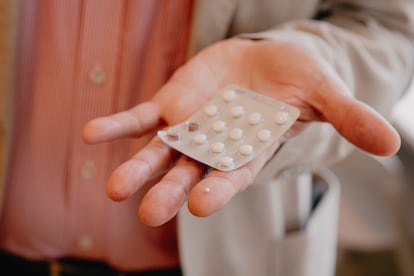
Dozens of repurposing cases still under investigation were presented at the meeting. One of them involves another very common drug, atorvastatin — used to control cholesterol — to enhance the effectiveness of treatments used for tuberculosis. Another, nitisirone, approved for some hereditary diseases, has shown good results for sleeping sickness caused by the tsetse fly, a serious problem in several African countries. And nitroxoline, an old antibiotic no longer in use, has saved patients with encephalitis caused by amoebas like the “brain-eating” amoebas, which are almost always fatal.
All research repurposings, however, run into similar problems as those faced by losartan. “These are very promising cases, but they face many obstacles before they achieve EMA approval and ensure that all patients who need these drugs have access to them under the best conditions,” says Anton Ussi, director of operations at EATRIS, a consortium of European research centers.
Clues to the new potential of old drugs emerge in consulting rooms or laboratories. “It’s often the case that a doctor or academic sees that they might be useful for a new disease. They are very good professionals in healthcare or basic research, but generating and funding all the evidence needed to convince the EMA to approve a new indication requires expertise they don’t usually have. It’s something pharmaceutical companies do. Theoretically, repurposing is cheaper and faster than developing a new drug, but the process is complex,” adds Ussi.
The European Union is now seeking formulas to overcome these problems and accelerate the transition from evidence generated in clinical trials and academia to a drug’s approved indications. As part of the ongoing review of pharmaceutical legislation, the new regulation — which is to replace the current Regulation 726/2004 — stipulates in Article 48 that if a non-profit entity presents evidence of a drug’s benefits for an unmet medical need, the EMA may approve it and require the companies that market it to include the new indication in the product data sheet. This step can currently only be taken at the initiative of a pharmaceutical company.
In practice, repurposing is already being done in many hospitals through so-called “off-label” use, in which a drug is administered for conditions not approved by regulatory agencies. La Paz Hospital (Madrid), a leading hospital in Spain for treating patients with butterfly skin, uses the master formulation of losartan syrup for children like Mía. “In non-recessive forms of the disease, there is chronic inflammation that progresses to fibrosis and other complications, even with the risk of squamous cell carcinoma [a type of cancer]. Losartan is a drug we know well, it’s inexpensive, and it helps contain the progression of this inflammation,” explain Raúl de Lucas and Rocío Maseda, from the Dermatology Department at La Paz.
But both specialists admit this use — and it was emphasized in Amsterdam — is not without its drawbacks. One is that our knowledge of the efficacy, dosage, and actual safety of drugs used off-label is usually based on the experience of professionals, case series, or small early-stage trials — evidence that is less robust than that obtained in double-blind clinical trials. Another is that “off-label use can be socially unfair because patients can only benefit from it if their doctor is aware of the latest research on rare diseases, which in practice is almost impossible.” Furthermore, legal issues could arise in the event of poor clinical outcomes due to the use of drugs off-label or supply problems, since the manufacturer calculates its production based on approved indications.
The approval of new indications by the EMA, which reviews and publishes the most comprehensive information on safety and efficacy, thus guarantees that the rebranding will reach all patients with full guarantees. Zahn points out that achieving this takes time and money. “In the best-case scenario, we hope to achieve approval in about four years in Europe and five in the United States. But it’s difficult to attract investors. Trials are expensive, losartan is cheap, and the number of patients with epidermolysis bullosa is small. So the uncertainty surrounding the commercial viability of the new indication is high. The future price, even if it isn’t very high, should ensure a return on investment,” he explains.
Crowd Pharma was created by researchers at the University of Freiburg to navigate the complex regulatory world. The company has developed a new form of losartan adapted to children with butterfly skin, tiny pills compared to those taken by adults — younger patients often have difficulty swallowing — that allow for better adjustment of pediatric doses and mask the drug’s very bitter taste. One fact illustrates how expensive these innovations are. The small pills are only a prototype, and producing them to the quality standards required for the trial would “cost around one million euros,” says Zahn.
Despite all these difficulties, “more than a hundred drug repurposing cases have already been approved by regulatory bodies such as the EMA and the FDA,” says Alicia Soler, head of scientific operations for REMEDi4ALL, an EU-funded project to accelerate drug repurposing. One of the best-known cases is that of thalidomide, once administered to treat morning sickness, then withdrawn due to the risk of fetal malformations and now used to treat some types of cancer. Or fenfluramine, formerly used for weight loss, which is now used to treat seizures associated with rare diseases such as Dravet syndrome and Lennox-Gastaut syndrome.
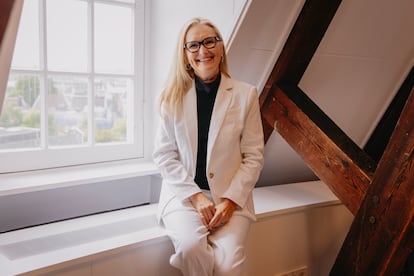
American Kim McClellan gave a moving account in Amsterdam of the improvement that repurposing brings to the lives of many patients. She was diagnosed at age five with recurrent respiratory papillomatosis, a chronic condition caused by the human papillomavirus that causes benign tumors in the airways. “I had more than 250 surgeries to remove them. My voice was barely a whisper to my son,” she explained.
Bevacizumab, a monoclonal antibody indicated for several types of cancer, changed her life in 2017. A year later, she entered the operating room for the last time and is now promoting, through a patient association, the extension of the drug’s indications with the aim of benefiting all patients with papillomatosis.
Sign up for our weekly newsletter to get more English-language news coverage from EL PAÍS USA Edition
Tu suscripción se está usando en otro dispositivo
¿Quieres añadir otro usuario a tu suscripción?
Si continúas leyendo en este dispositivo, no se podrá leer en el otro.
FlechaTu suscripción se está usando en otro dispositivo y solo puedes acceder a EL PAÍS desde un dispositivo a la vez.
Si quieres compartir tu cuenta, cambia tu suscripción a la modalidad Premium, así podrás añadir otro usuario. Cada uno accederá con su propia cuenta de email, lo que os permitirá personalizar vuestra experiencia en EL PAÍS.
¿Tienes una suscripción de empresa? Accede aquí para contratar más cuentas.
En el caso de no saber quién está usando tu cuenta, te recomendamos cambiar tu contraseña aquí.
Si decides continuar compartiendo tu cuenta, este mensaje se mostrará en tu dispositivo y en el de la otra persona que está usando tu cuenta de forma indefinida, afectando a tu experiencia de lectura. Puedes consultar aquí los términos y condiciones de la suscripción digital.
More information
Archived In
Últimas noticias
Maduro pleads not guilty before the federal court in New York: ‘I am still the president of Venezuela’
A new test can detect Alzheimer’s from a finger prick
UN team enters Sudanese city of El Fasher after paramilitary massacre: ‘It’s like a ghost town’
A recipe for resistance: Indigenous peoples politicize their struggles from the kitchen
Most viewed
- Gilles Lipovetsky: ‘If you want to live better and fall in love, take Prozac, don’t look to philosophy’
- Alain Aspect, Nobel laureate in physics: ‘Einstein was so smart that he would have had to recognize quantum entanglement’
- Alvin Hellerstein, a 92-year-old judge appointed by Bill Clinton, to preside over Maduro’s trial in New York
- Maduro’s downfall puts China’s relationship with Venezuela to the test
- Why oil has been at the center of Venezuela-US conflicts for decades

